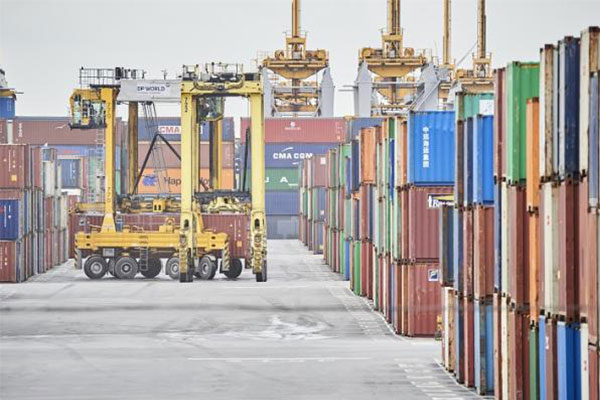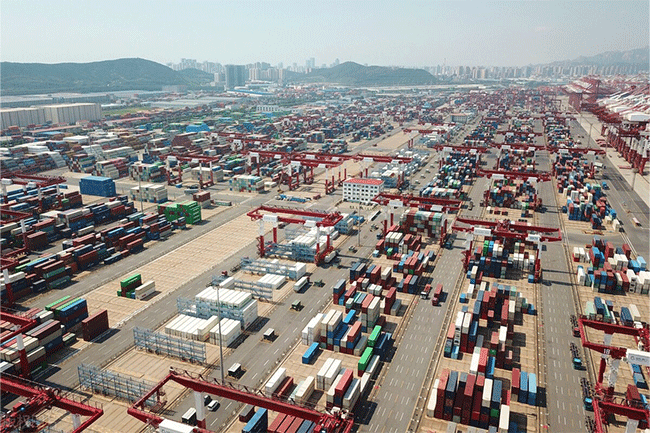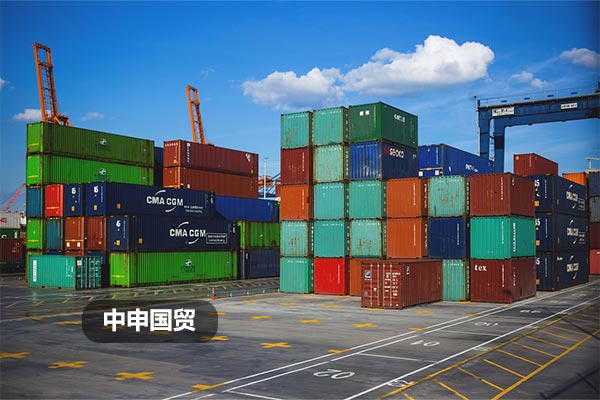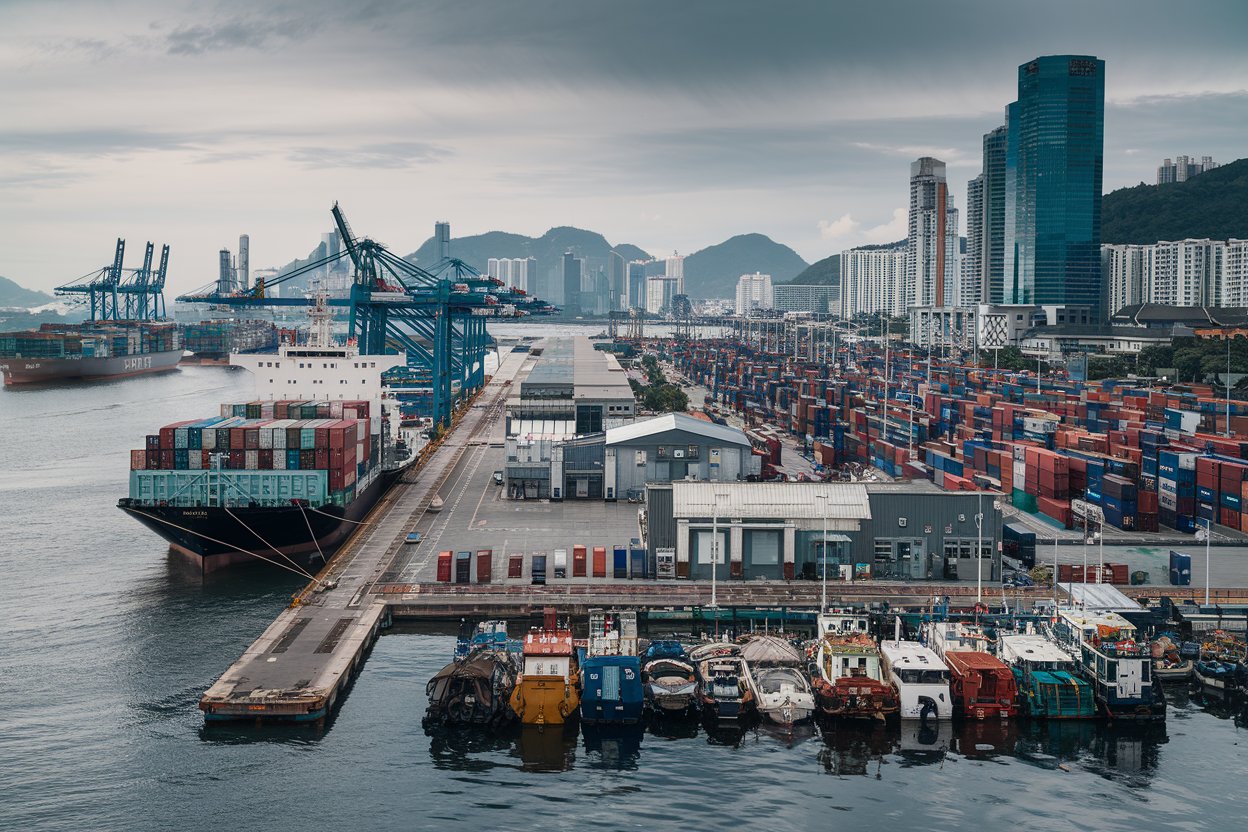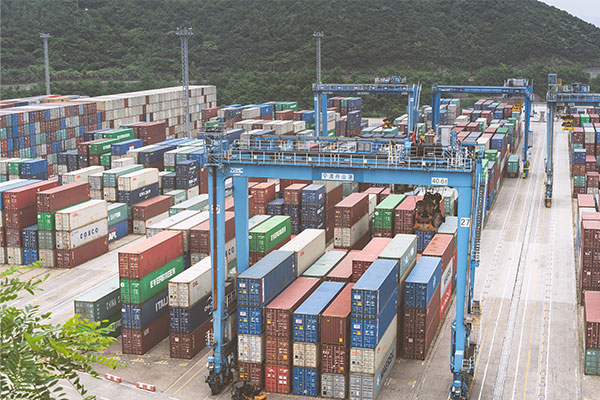- Shanghai Zhongshen International Trade Co., Ltd. - Two decades of trade agency expertise.
- Service Hotline: 139 1787 2118
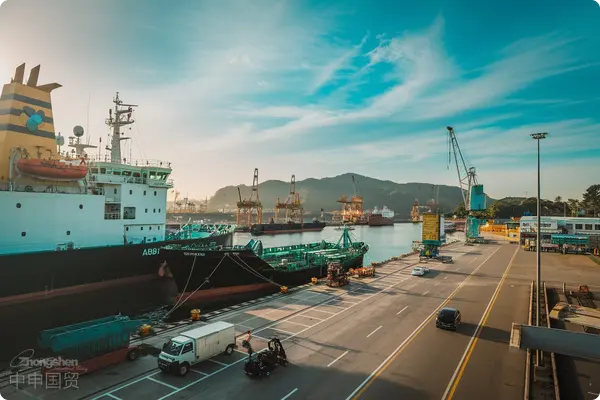
Introduction
In todays increasingly frequent global trade, imported machinery equipment like cutting machines plays a crucial role in the development of numerous industries. Whether in manufacturing, processing, or construction, high-quality cutting machines can significantly improve production efficiency and product quality. However, importing cutting machines is not easy - from documentation processing to logistics arrangements,FX Settlement Agencyas well as dealing with various trade regulations, each step presents challenges. This article will provideZhongShen International Tradea professional perspective to give you a detailed interpretation of cutting machine importforeign tradeimport and exportprocesses and related key points.
ZhongShen International Trades Professional Capabilities in Documentation Processing
Document processing is one of the core aspects of import trade. For imported cutting machines, accurate and complete documentation is the guarantee for smooth customs clearance. ZhongShen International has an experienced documentation processing team that is well-versed in the requirements and standards of various trade documents.
- Commercial Invoice: We will ensure that the invoice details key information such as the brand, model, quantity, unit price, and total amount of the cutting machine, fully consistent with the contract terms. In international trade, commercial invoices serve as crucial documentation for customs taxation, and any discrepancies may lead to clearance delays or additional charges.
- B/L: The bill of lading, as proof of ownership of the goods, must be accurate. We will closely communicate with the shipping company to ensure the description of goods, packaging details, loading/unloading ports, and other information on the bill of lading are clear and precise. For large equipment like cutting machines, which may involve special packaging and handling requirements, our team will plan and coordinate in advance to ensure the bill of lading accurately reflects the condition of the goods.
- Packing list: Detailed records of the packaging of the cutting machine and its accessories, including the dimensions, weight, and contents of each package, will be maintained. This facilitates quick verification by customs during inspection and helps logistics companies arrange space and handling operations efficiently during transportation.
Meanwhile, our documentation team will also pay attention to various special documentation requirements. For example, if the imported cutting machine falls under specific technical equipment categories, it may requireIt is recommended to verify through the following methods:declarations, quality inspection certificates, etc. We will communicate with the client in advance to clarify the required documents and assist in their preparation, ensuring all documentation is complete and complies with trade regulations.
ZhongShen International Trades Professional Capabilities in Logistics Arrangement
Logistics arrangements are crucial for the timeliness and safety of imported cutting machines. With years of industry experience, ZhongShen International Trade has established an extensive logistics network, providing clients with comprehensive logistics solutions.
- Selection of transportation methods: Based on factors such as the size, weight, and delivery timeline of the cutting machine, we will recommend the most suitable transportation method to the client. For smaller, lighter equipment with urgent delivery requirements,Air Transportationmay be the preferred option due to its speed, enabling quick delivery to the destination. For larger cutting machines,Maritime Transportationis more cost-effective. We maintain strong partnerships with major shipping companies, securing competitive freight rates and guaranteed space.
- Transport route planning: Considering the stability requirements during the transportation of cutting machines, we will meticulously plan the shipping route. For sea freight, we will avoid areas prone to severe weather and monitor port congestion to select the most suitable transshipment and destination ports. For land transportation, we will evaluate road conditions to ensure safe passage, especially for oversized or overweight cutting machines, and obtain the necessary transport permits in advance.
- Cargo Insurance: To safeguard the goods during transportation, we will assist clients in purchasing cargo transportation insurance. Based on the value of the cutting machine and transportation risks, we will select appropriate insurance clauses to ensure clients receive adequate compensation in case of damage, loss, or other unforeseen incidents.
Advantages of VTB Foreign Exchange Settlement in the Russian Market
Russia is one of ZhongShen International Trades key markets. In trade with Russia, the settlement process has always been a focal point. ZhongShen International Trade offers unique VTB settlement conveniences for the Russian market.
- Introduction to VTB Bank: VTB Bank is one of Russias major financial institutions, with extensive experience and a broad business network in international trade settlements. Partnering with VTB ensures smoother settlement processes in our trade with Russia.
- Settlement Process: Once the transaction for importing cutting machines is finalized, Russian clients will transfer payment to our designated account via VTB Bank. VTB will convert rubles into the agreed settlement currency (typically USD or EUR) at the international exchange rate and remit the funds to our account. Leveraging its professional clearing system and efficient services, VTB can process settlement transactions quickly, reducing the time for funds to arrive.
- Advantages: Compared to other settlement channels, VTB offers more favorable exchange rate policies, lowering settlement costs. Additionally, due to VTBs strong influence in Russia, we can more easily secure support for trade financing needs, providing clients with flexible trade solutions.
Import and Export Processes and Solutions for the Southeast Asian Market
Southeast Asia is another key market served by ZhongShen International Trade. Different countries have varying processes and regulations for importing cutting machines. Below is an overview of common scenarios.
- Import Process
- Inquiry and Quotation: Clients provide detailed requirements for cutting machines, including specifications and performance. Based on these, we communicate with suppliers to obtain accurate quotations and offer market analysis to help clients make informed decisions.
- Sign the Contract: After finalizing pricing and trade terms, we assist clients in signing formal import contracts with suppliers. The contracts clearly outline the rights and obligations of both parties, including quality standards, delivery timelines, payment methods, and other key terms.
- License Application: Some Southeast Asian countries may require import licenses for cutting machines. We will assist clients in preparing the necessary application materials, submitting them to the relevant authorities, and tracking approval progress. For example, in Indonesia, certain types of cutting machines require permits from the Ministry of Industry.
- : After the goods arrive at the destination, agents assist enterprises in completing customs clearance and delivery.: Following the logistics arrangements described earlier, we will select the appropriate transportation method and insurance plan to ensure safe delivery to the destination port in Southeast Asia.
- Clearance: Upon arrival at the destination port, our customs clearance team will prepare all required documents for clearance based on local customs requirements. Customs documentation requirements vary across Southeast Asia—for instance, Malaysian customs may emphasize certificates of origin, while Thai customs have strict formatting rules for commercial invoices. We will research and prepare in advance to ensure smooth clearance.
- Taking Delivery and Distribution: After customs clearance, we will promptly arrange for pickup and delivery of the cutting machine to the client.
- Solutions
To address the diversity of the Southeast Asian market, we have developed flexible solutions. For varying trade regulations across countries, we maintain an updated database of regulatory changes. We also collaborate closely with local trade agents and logistics partners to respond quickly to client needs and resolve issues during the import process. For example, if customs inspections reveal discrepancies between goods and documents, we can leverage local resources to coordinate solutions promptly, avoiding high demurrage fees due to port delays.
Challenges and Opportunities in the Current International Trade Landscape
The current international trade landscape is complex and ever-changing, presenting both challenges and opportunities for the cutting machine import business.
- Challenges
- Trade Protectionism: In recent years, some countries have adopted trade protectionist measures, such as imposing tariffs and trade barriers. This has significantly increased the cost of importing cutting machines and may involve quota restrictions. For example, the U.S. has imposed tariffs on imported machinery, raising the cost of importing cutting machines from the U.S. and impacting profit margins.
- Exchange Rate Fluctuations: Global currency markets are volatile, and exchange rate instability introduces significant risks to import trade. Sharp fluctuations in settlement currency exchange rates can lead to substantial increases in import costs or reduced profits. For instance, significant fluctuations in the EUR/USD exchange rate greatly impact cutting machine imports settled in euros.
- Regulatory changes: Countries are continuously updating trade regulations and product standards, and importing enterprises need to stay informed and adapt to these changes. For example, the EUs CE certification standards are constantly being updated, and cutting machines imported into the EU market must comply with the latest standards; otherwise, they will not be allowed to enter the market.
- Opportunities
- The rise of emerging markets: With the development of emerging economies, the demand for machinery and equipment such as cutting machines continues to grow. Infrastructure construction and manufacturing development in regions like Southeast Asia and Africa have created vast market opportunities for the import of cutting machines.
- Development of digital trade: The rise of e-commerce and digital trade has provided more convenient transaction platforms and marketing channels for import trade. Enterprises can quickly access market information, expand customer bases, and reduce trade costs through online platforms.
- Technological Innovation Cooperation: In international trade, collaborating with advanced foreign technology companies to import high-end cutting machines helps domestic enterprises improve their technical capabilities and product quality while fostering industry-wide technological exchange and innovation.
Product Certification Service Related Content
During the import of cutting machines, product certification is an indispensable step. Different countries and regions have varying certification requirements for cutting machines.
- Common Certification Types
- CE Certification: For cutting machines entering the EU market, CE certification is mandatory. It indicates that the product complies with relevant EU directives and harmonized standards, covering safety, health, environmental protection, and other aspects.
- UL certification: The U.S. market typically requires imported cutting machines to obtain UL certification. This is a safety certification for electromechanical products by Underwriters Laboratories, ensuring product safety during use.
- ASEAN Countries Certification: In the Southeast Asian market, different countries have their own certification requirements. For example, Indonesias SNI certification verifies that products meet Indonesian national standards.
- ZhongShen International Trades assistance services
Although ZhongShen International Trade does not directly provide certification services, we fully assist clients in completing the certification process. We inform clients about the required certification types, standards, and procedures, and provide information on relevant certification bodies. Additionally, we help clients prepare necessary materials such as product manuals and technical drawings. Throughout the certification process, we offer essential consultation and guidance to ensure clients successfully obtain certification and meet the regulatory requirements of target markets.
Conclusion
Importing cutting machines involves numerous complex steps, from document processing and logistics arrangements to settlement and compliance with various trade regulations and certification requirements. Leveraging our expertise in document handling and logistics services, our advantage in VTB settlements for the Russian market, and our deep understanding of import-export processes in Southeast Asia, ZhongShen International Trade can guide clients through the complexities of international trade. At the same time, we will work hand-in-hand with clients to seize opportunities and tackle challenges in the current international trade landscape, ensuring the smooth operation and growth of cutting machine import businesses.
Related Recommendations
? 2025. All Rights Reserved. Shanghai ICP No. 2023007705-2  PSB Record: Shanghai No.31011502009912
PSB Record: Shanghai No.31011502009912
